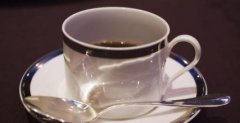A brief introduction to the treatment method of grinding degree and baking degree of Larez Yaoke boutique coffee beans with fragrant taste

Puerto Rico's coffee beans are carefully planted, pure, fragrant and heavy, of which the best coffee is Yauco Selecto, which means "Selecto". Yaocote Coffee is grown only on three farms in the southwest of the island, San Pedro, Caracolillo and La Juanita. It is a truly high-quality coffee with a strong flavor and a long aftertaste. The hills of southwestern Puerto Rico have a mild climate, a long period of plant maturity (from October to February) and high-quality clay. People here have been using an eco-friendly, intensive planting method, picking only fully ripe coffee beans and then flushing them in a drum device for 48 hours. Yaocote selected coffee beans are preserved with sheepskin before sale and will not be removed until order and delivery to ensure the best freshness of the coffee. Relevant U.S. government employees, such as FDA and USEA, will also be present at the transaction, and they are here to monitor producers' compliance with federal regulations. There are also professional reviewers who randomly take one bag of coffee from every 50 bags as samples and use international gauges to identify the quality of coffee beans, all in order to ensure the quality of the real Yaocote selected coffee.
Island Coffee-Puerto Rico
And Jaime Fortuno, the president of Escoki's Escogido Yauco agency, pays silent attention to all this work every year, even the smallest details. Fortuno is an investment banker who graduated from Harvard Business School. He was determined to seize every opportunity to open up a market for top coffee in Puerto Rico. He expects a maximum annual output of 3000 bags of 45kg each, less than 1 per cent of the island's total coffee production.
This is why Puerto Rico and Puerto Rico Yukot select Yauco Selecto, which is the manor bean, the joint brand of Puerto Rico San Pedro, Caracolillo and La Juanita.
On September 23, 1869, the people of Puerto Rico were in R. An uprising was held in the town of Larez (historically known as the "voice of Larez") under the leadership of Emmetrio Betons, which declared the establishment of a republic on the 24th and was later suppressed by the Spanish colonial army. After a long struggle, Puerto Rico was finally granted local self-government by Spain. However, it has been only one year since the island became an American colony after the Spanish-American War. [4]
In 1898, the Spanish-American War broke out and Spain was defeated. According to the Treaty of Paris, Puerto Rico was ceded to the United States. The administrative jurisdiction of the United States over Puerto Rico first took the form of a military junta. During its two years of governance of the island, the junta established schools, roads, railways, hospitals and health facilities. In 1900, the United States Congress established civilian control over the island. One of the two chambers of the Governor, the Cabinet and the Puerto Rican legislature is appointed by the President of the United States. Puerto Ricans elect another chamber of the legislature and a commissioner based in the capital who will represent the interests of the island in Washington and have a voice but no vote in Congress. Puerto Ricans are also exempt from United States taxes.
In 1917, the United States Congress passed the Jones Act, imposing "American citizenship" on the people of Puerto Rico.
In 1937, the Puerto Rican people were the leader of the Kuomintang of Puerto Rico P. Alvisu Campos launched an independent uprising in Ponsai, but was suppressed again.
In 1947, the United States Congress allowed the Governor to elect Yaoke Yauco, an area of 176.5 square kilometers in southern Poland, named for the production of Tainos, but local residents prefer to call themselves: la Ciudad del Caf é (Coffee City) and la Capital Ta í na (Tainos Center). In the 1960s, immigrants from Corsican improved the cultivation of coffee and pioneered the application of flower sticking machines to the process of peeling coffee, making Puerto Rico an outstanding representative of coffee, ranking sixth in the world in terms of production and sales.
The Spanish-American War of 1889 ended with the victory of the United States, ending more than 400 years of Spanish rule over Puerto Rico. The demand for sugar in the United States has increased significantly, while the hurricane destroyed most coffee plantations, and the coffee industry in Puerto Rico was hit hard by natural and man-made disasters.
The national economy of Puerto Rico developed rapidly in the 20th century. Stimulated by the strong support of the government and the expanding demand of the local market, Polish coffee gradually returned to its former elegant demeanor. The Yauco region is famous for its full Body, creamy and red wine aftertaste, and chocolate nut finish. The new Puerto Rico coffee is a mild, supple, well-balanced coffee with a charming single malt aroma. It is extremely sweet when sipped in a cup, and the medium-baked cream and greasy texture is often suitable for Puerto Rico island beans. The whole history of coffee in the Caribbean has a lot to do with Spanish reclamation. Coffee was not that important in the 18th century. The main job was to grow sugar-producing crops in fertile valleys. In the early 19th century (1800), the residents of Corsica in the French Mediterranean moved to Puerto Rico because the valleys had been occupied by Spanish immigrants. So they chose to settle in the southwest mountain area of the island, mostly near the city of Yuko. because of their efforts and determination, coffee cultivation brought them a good return. They dominated the coffee industry on the island in the 1860s. At that time, Puerto Rico's coffee bean production ranked sixth in the world, and the coffee trees planted by Corsican immigrants on the highlands were regarded as selected. The origin of Yauco Selecto coffee beans is mainly traced back to this period, but two severe hurricanes hit Puerto Rico in 1898. These two hurricanes destroyed the local coffee industry, and farmers had to wait two years to get the crops back to normal. During this period, the United States was very interested in Puerto Rico's sugar production, and European countries no longer imposed tariffs on Puerto Rico coffee beans as crops produced in their colonies. Dealt a heavy blow to Puerto Rican coffee. The Caribbean Sea is a warm, romantic and mysterious sea, and a lot of good coffee is also around this ring sea, such as the Blue Mountains of Jamaica, Dominica, Crystal Mountain of Cuba, Yuko of Puerto Rico and so on. These are the most famous rare and expensive coffee in the world. These island beans give people a light milky aroma and elegant floral aroma, acidity and meticulous softness. Although it is still difficult to avoid the problem of easy water loss of coffee caused by the muggy climate of the island, the overall texture is the first-grade beans of coffee. Puerto Rico coffee is not easy to buy on the market mainly because the output is less and mostly exported to Europe. Coupled with the adverse effects of severe weather hurricanes on coffee crops, there will be no coffee to buy for the whole year.
Puerto Rico was originally inhabited by the Indian Taino tribe.
Christopher Columbus sailed here in November 1493 and named it San Juan in honor of John the Baptist the Baptist.
In 1508 the Spaniard J. Ponce de Leon established a colonial stronghold on the island and was appointed governor the following year.
It was colonized by Spain in 1509. As a result, the native Indians on the island became slaves and were driven to work on farms and gold mines.
In 1509, the administrative center of Puerto Rico was established. In 1521, the local government changed the name of the island to Puerto Rico and its capital to San Juan.
In 1511, the Taino uprising, led by their leader Guayabana, was suppressed by the colonial authorities and 6000 Indians were slaughtered.
In the middle of the 16th century, the Tylenos were wiped out, and the colonists brought blacks from Africa as slaves to grow sugar cane. Since then, Puerto Rico has been harassed by pirates and attacked by Britain, France, the Netherlands and other countries.
In the middle of the 18th century, with the increasing number of immigrants and slaves, coffee became the main export.
On September 23, 1869, the people of Puerto Rico were in R. An uprising was held in the town of Larez (historically known as the "voice of Larez") under the leadership of Emmetrio Betons, which declared the establishment of a republic on the 24th and was later suppressed by the Spanish colonial army. After a long struggle, Puerto Rico was finally granted local self-government by Spain. However, from then on, it took only one year for the island to become an American colony after the Spanish-American War
Important Notice :
前街咖啡 FrontStreet Coffee has moved to new addredd:
FrontStreet Coffee Address: 315,Donghua East Road,GuangZhou
Tel:020 38364473
- Prev

A brief introduction to the cultivation of Larez Yaoke boutique coffee beans with a long aftertaste, geographical location, climate and altitude
People here have been using an eco-friendly, intensive planting method, picking only fully ripe coffee beans and then flushing them in a drum device for 48 hours. Yaocote selected coffee beans are preserved with sheepskin before sale and will not be removed until order and delivery to ensure the best freshness of the coffee. At the time of the transaction, the relevant information of the United States government
- Next

A brief introduction to the description of the flavor and aroma characteristics of high-quality coffee beans
The founder and current CEO, Joseph Brodsky, personally went to Ethiopia, the native place of coffee, to look for wild varieties of coffee trees, tried different ways of handling it, and finally let the coffee speak in its own voice, so that the whole world could hear this kind of sincere whisper full of fruit aroma and rich connotation. This is not enough. He is also active in buying Guangzhou in Panama.
Related
- Detailed explanation of Jadeite planting Land in Panamanian Jadeite Manor introduction to the grading system of Jadeite competitive bidding, Red bid, Green bid and Rose Summer
- Story of Coffee planting in Brenka region of Costa Rica Stonehenge Manor anaerobic heavy honey treatment of flavor mouth
- What's on the barrel of Blue Mountain Coffee beans?
- Can American coffee also pull flowers? How to use hot American style to pull out a good-looking pattern?
- Can you make a cold extract with coffee beans? What is the right proportion for cold-extracted coffee formula?
- Indonesian PWN Gold Mandrine Coffee Origin Features Flavor How to Chong? Mandolin coffee is American.
- A brief introduction to the flavor characteristics of Brazilian yellow bourbon coffee beans
- What is the effect of different water quality on the flavor of cold-extracted coffee? What kind of water is best for brewing coffee?
- Why do you think of Rose Summer whenever you mention Panamanian coffee?
- Introduction to the characteristics of authentic blue mountain coffee bean producing areas? What is the CIB Coffee Authority in Jamaica?

